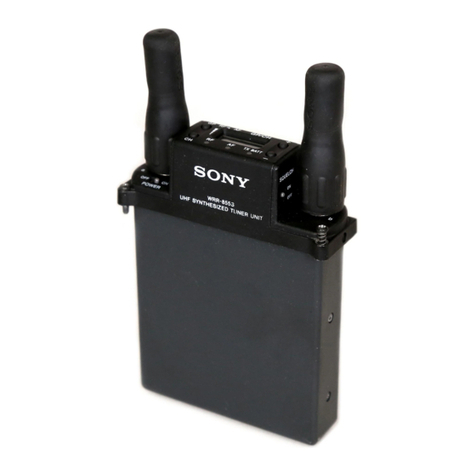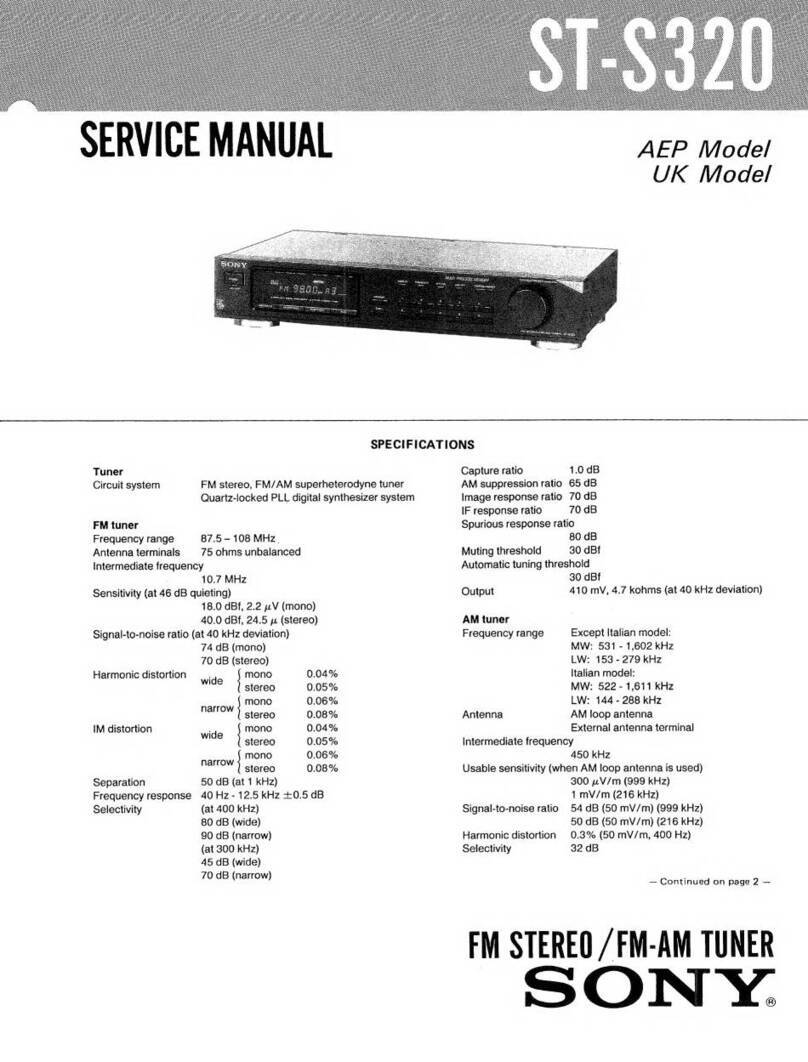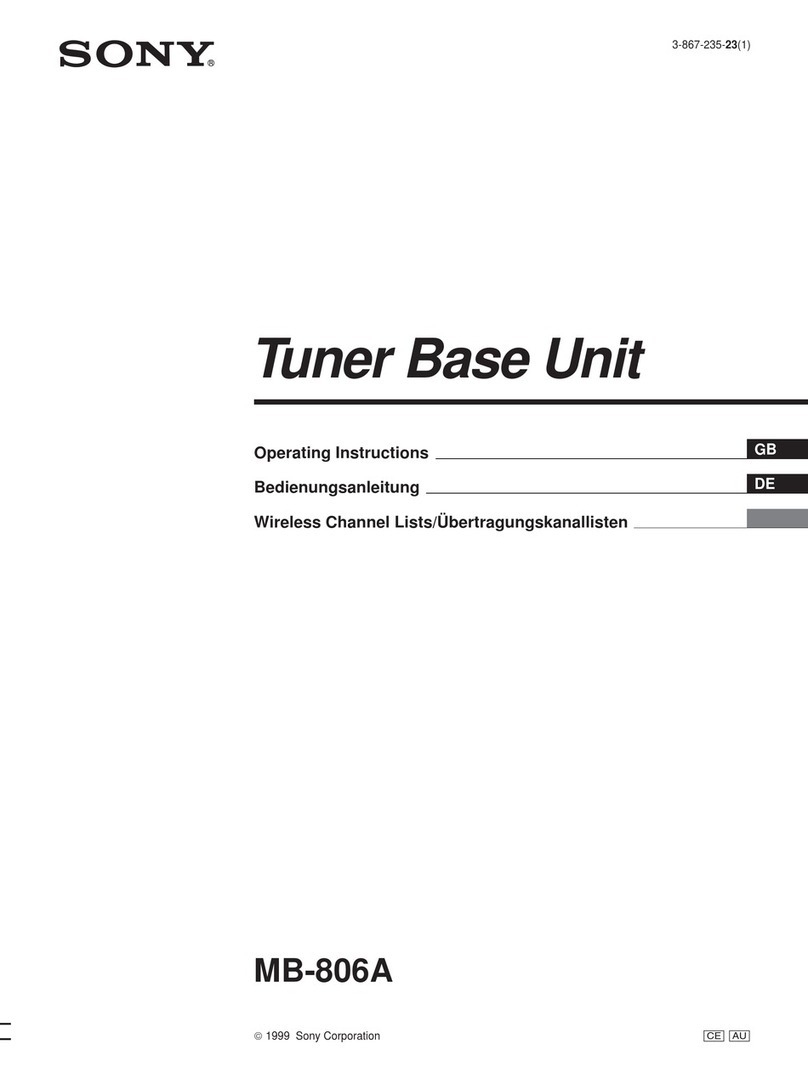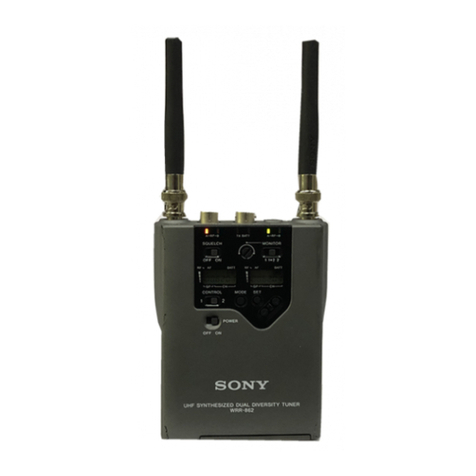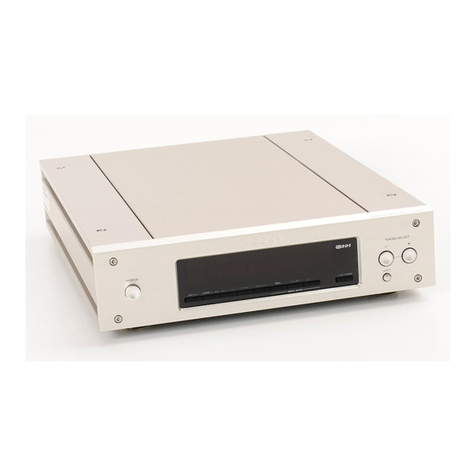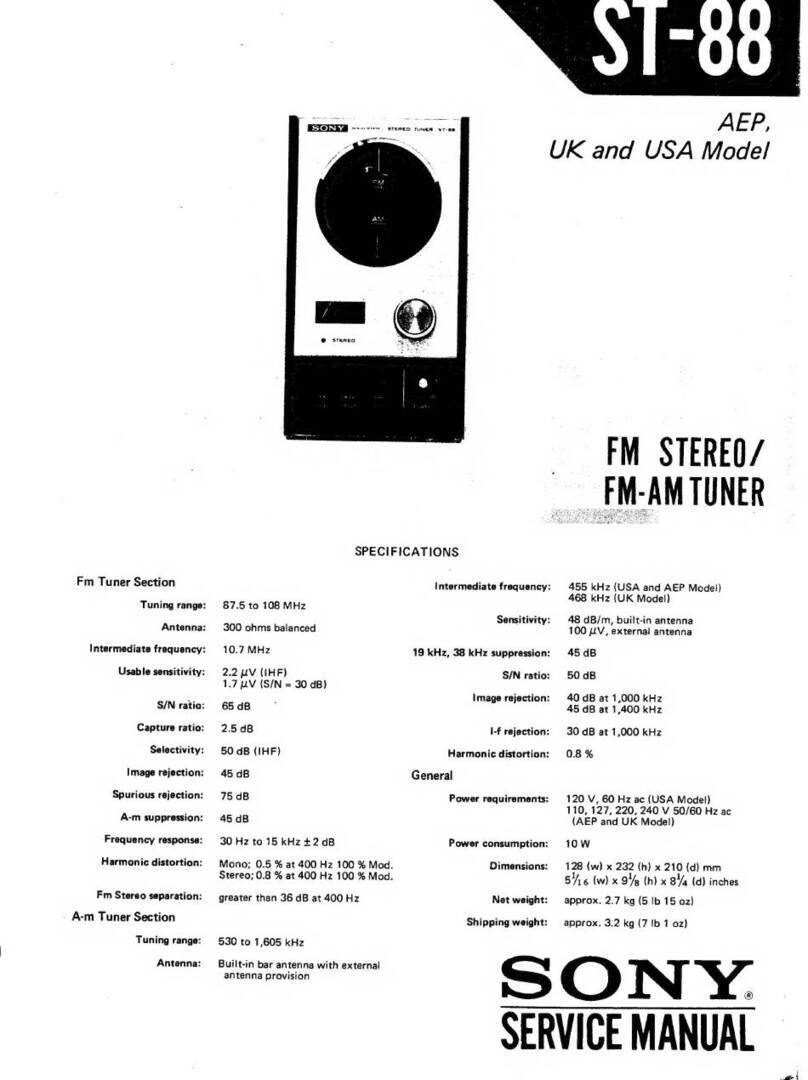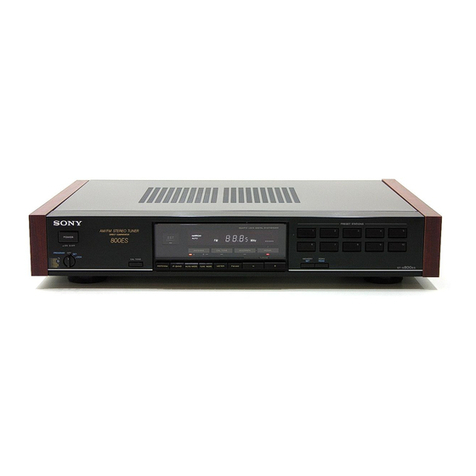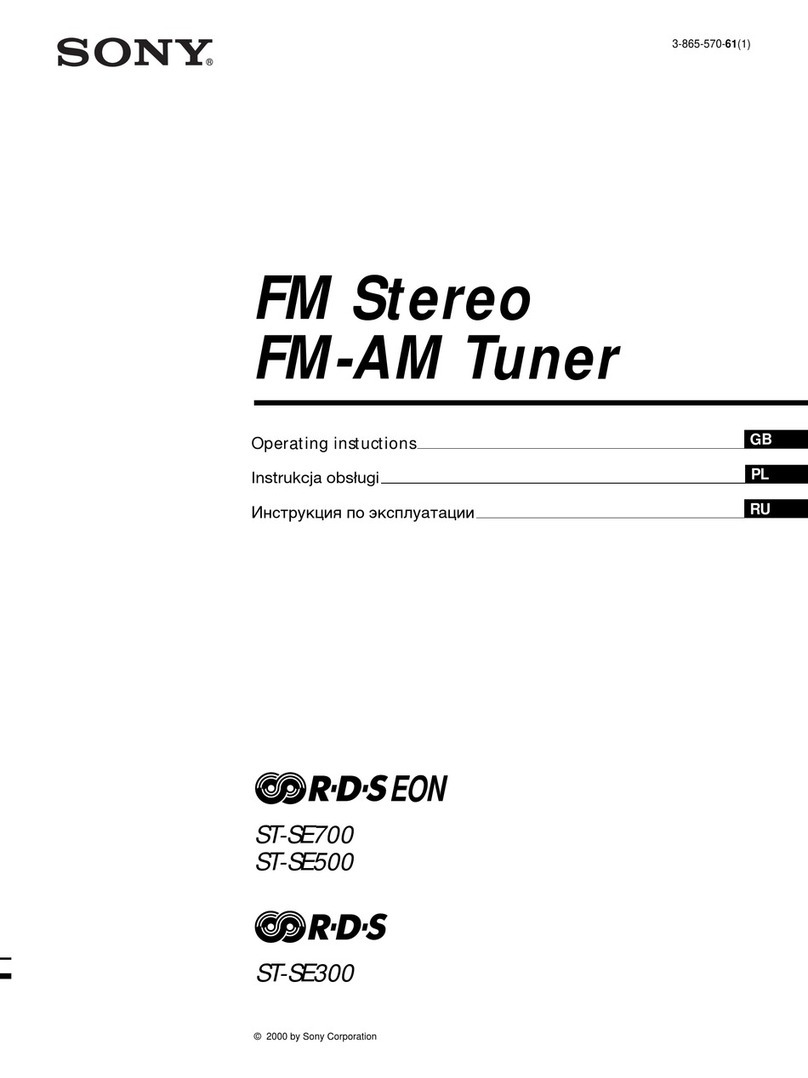Sony ST-S444ES User manual
Other Sony Tuner manuals
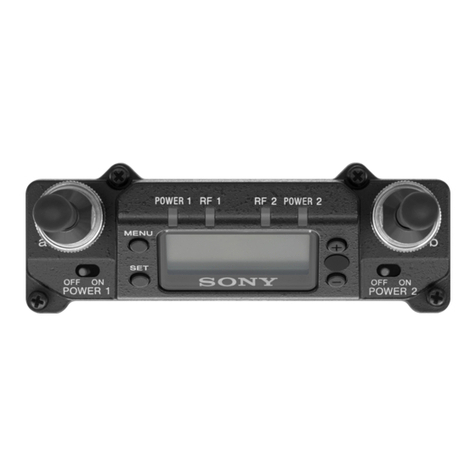
Sony
Sony URX-S03D User manual

Sony
Sony XT-100HD User manual

Sony
Sony ST-H3600 User manual
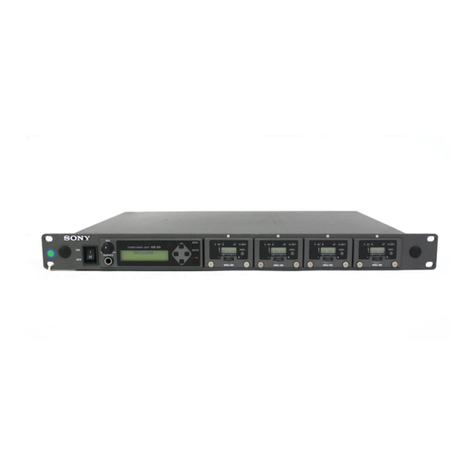
Sony
Sony MB-8N User manual

Sony
Sony WRR-862A User manual
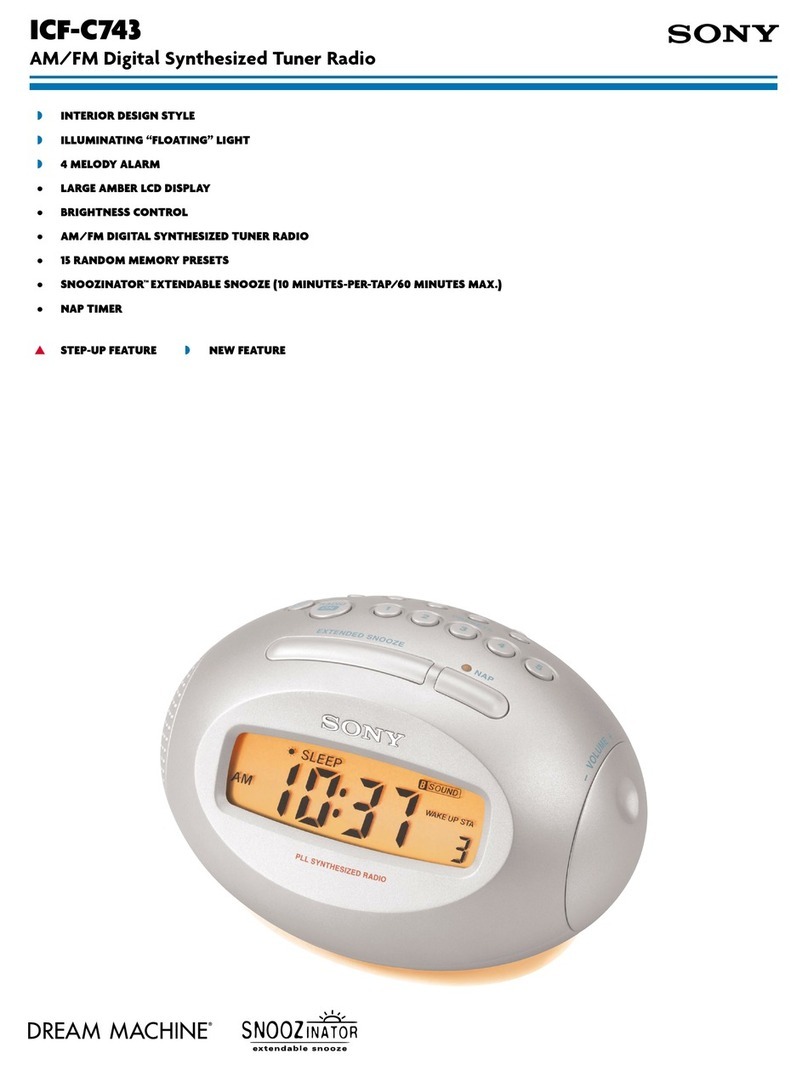
Sony
Sony Dream Machine ICF-C743 User manual

Sony
Sony ST-D777ES User manual
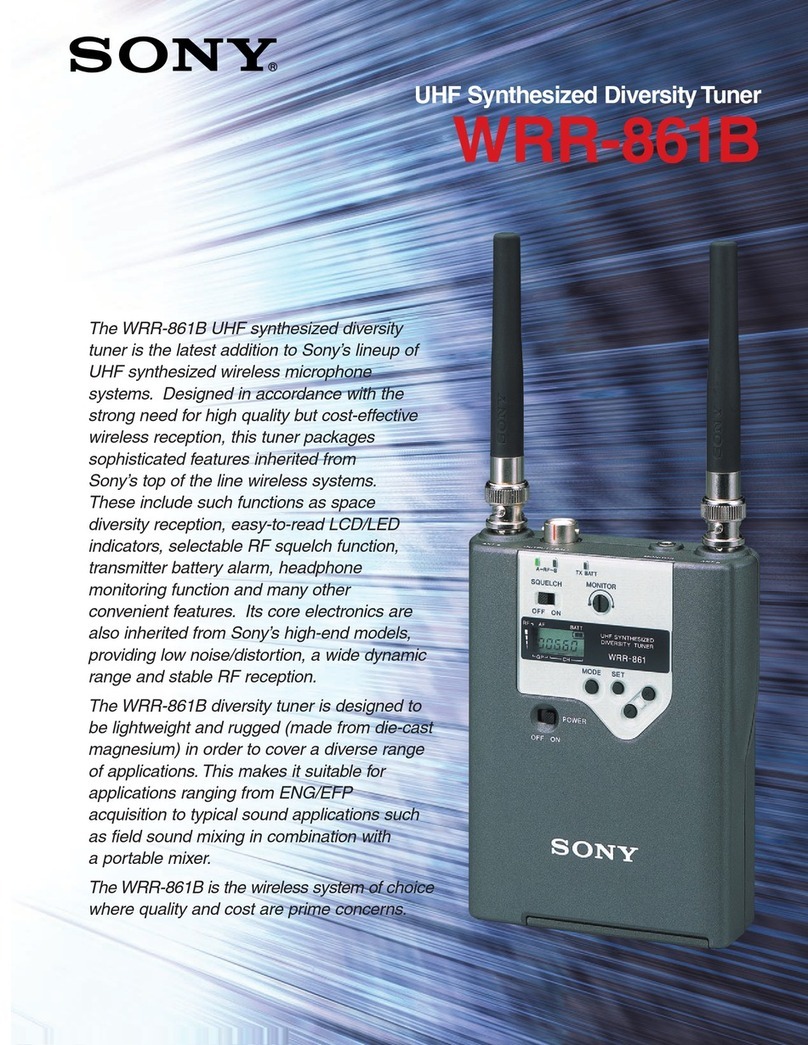
Sony
Sony WRR-861B Installation and operation manual

Sony
Sony Ipela NSR-S10 User manual

Sony
Sony FDL-3105 User manual
Popular Tuner manuals by other brands

NAD
NAD C 445 owner's manual

Pioneer
Pioneer GEX-P700DAB Operation manual

Sirius Satellite Radio
Sirius Satellite Radio SC-FM1 user guide

Antique Automobile Radio
Antique Automobile Radio 283501B Installation and operating instructions

Sanyo
Sanyo FMT M15L Service manual

Monacor
Monacor PA-1200R instruction manual
